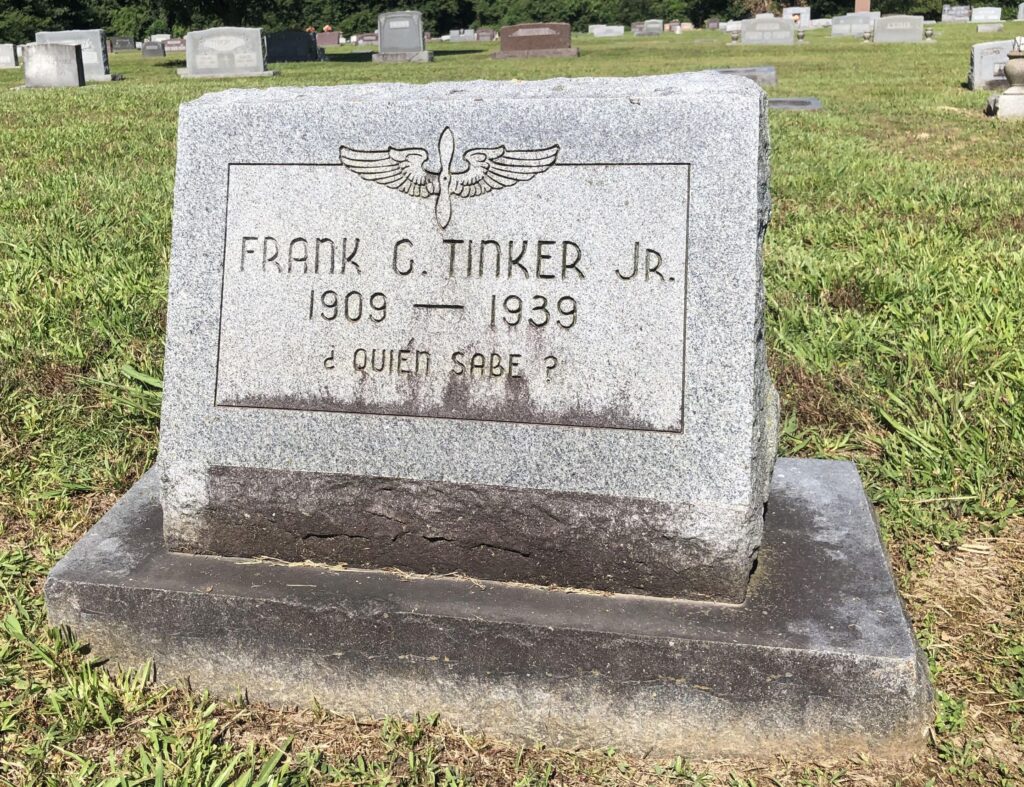In Memoriam Frank G. Tinker Jr. (1909-1939)
In the summer of 1939, well into writing the For Whom the Bell Tolls, Hemingway heard that Frank Tinker, a volunteer American pursuit (fighter) pilot for the Republic had killed himself. Hemingway had first met Tinker soon after the writer arrived in Spain in the spring of 1937. A couple of years later, Hemingway was able to do him a favor. According to Tinker’s war memoir, after getting out of Spain he had trouble establishing his US citizenship with the American consulate in Paris. Like most American volunteers, he had relinquished his passport before entering Spain, because joining the International Brigades violated American law:
Finally, [the vice-consul] said that if I could get some American citizen who knew me to identify me, his department would condescend to give me the passport. . . . But luck was again on my side. I went over to Harry’s Bar that night and the first person I saw after entering was my old Madrid friend, Ernest Hemingway. When he heard what I needed, he immediately offered to make the required identification. After a few further delays and obstacles, I was at last formally identified on August 25 and a passport was made out in my name. (311)
If Hemingway hadn’t known it before, he would have learned from Tinker’s 1938 memoir that Tinker had flown as part of a fighter escort to bombers during the Segovia Offensive, the battle of For Whom the Bell Tolls’ action. For his part, Hemingway included an excerpt from the memoir in Men at War (1942), titling it “The Italian Debacle at Guadalajara.”
Between the memoir’s publication and Tinker’s death, Hemingway wrote the story “Night before Battle.” Both texts feature a pilot who recently had to bail out of his shot-up plane and who finds himself loaded with champagne bottles in a hotel elevator. The story calls him Baldy, a “rummy fake Santa Claus”; the real person, the American pilot Harold “Whitey” Dahl, sported Santa-white hair. The Frank character in the story never shows up: “Where’s Frank,” Baldy asks, and asks again: “Listen, where’s Frank?”
A bellhop found Frank Glasgow Tinker dead in a Little Rock, Arkansas, hotel room in June 1939. Newspapers reported his death as a suicide from a .22 caliber pistol. Hemingway probably got the news from his Piggott, Arkansas, in-laws, Paul and Mary Pfeiffer, the recipients of a 28 July 1939 letter in which he writes: “Was sorry I did not see Frank Tinker before he took such a drastic step. Have argued myself out of that so often that I think I could have kicked the idea out of his head. He was a good fellow; very brave and a truly fine flyer.” In a letter to Edward Garnett a year earlier, about the memoir, Hemingway described Tinker as fearless in the air.
Family and friends did not believe Tinker killed himself—for one thing, because he always carried a .45 Colt pistol in his suitcase. He was twenty-nine. Tinker titled his memoir Some Still Live. His DeWitt, Arkansas, tombstone, which I visited this past summer on the 85th anniversary of his death, reads “¿Quien Sabe?” (Who knows?).
Alex Vernon is the M.E. and Ima Graves Peace Distinguished Professor of English at Hendrix College outside Little Rock-This text is adapted from an appendix to his Reading Hemingway’s “For Whom the Bell Tolls”: Glossary and Commentary (Kent State). More at alex-vernon.squarespace.com.













